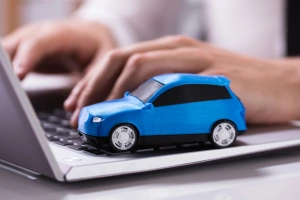Understanding The Anti-Lock Braking System In Cars
Anti-Lock Braking Systems are a type of braking system that prevents wheels from locking up. Read this article to understand the anti-locking braking system in cars.
Table of Contents
Anti-Lock Braking Systems are a type of braking system that prevents wheels from locking up. Anti-lock braking systems, often known as ABS or anti-skid braking systems, assist to prevent vehicle wheels from locking up and enhance steering control during braking. The anti-lock braking system is now standard on almost all new vehicles and it's utilized to help with traction control as well as steering when braking.

Understanding The Anti-Lock Braking System In Cars
A typical anti-lock braking system has four key components:
- Speed Sensors that measure the rotational speed of the wheels.
- Valves in the brake line can allow, obstruct, or release brake pressure in three distinct ways.
- Hydraulic fluid is pumped into the pumps, which then provide pressure to the braking drums or calipers as needed.
- The ABS's brain is the electronic control unit (ECU), which analyses data from sensors to determine whether or not to apply the brakes.
What is the Anti-Lock Braking System and How Does it Work?
In hard braking circumstances, ABS works by releasing and then reapplying or 'pumping' the brakes to the car wheel. 'Locking,' or when a wheel stops moving and starts to skid, is detected by sensors on each wheel. However, not all ABS systems are created equal, with some merely preventing the rear wheels from locking up. When ABS detects a lock-up, it pumps the brakes hundreds of times per second. This helps the driver maintain control of the vehicle by preventing the wheels from sliding. ABS, in essence, works in three stages:
- The brake pedal is depressed.
- Skidding or 'locking' is detected by wheel sensors.
- The brakes are pumped by ABS.
Does ABS Make it Easier to Come to a Halt?
The fundamental goal of ABS isn't to assist automobiles to stop more quickly but to assist drivers in maintaining control of their automobiles during hard braking conditions. In ideal conditions, ABS-equipped automobiles have lower stopping distances than non-equipped vehicles. ABS does not ensure a shorter stopping distance; it is a side effect.
When employed on common road surfaces like bitumen and concrete, ABS has been shown to lower the chance of accidents. On conditions such as snow, ice, and gravel, however, the results are substantially different, with braking distances actually increasing. On snow, a skidding or locking wheel creates a wedge of snow that aids vehicle stopping. ABS, on the other hand, detects wheel locking and attempts to prevent any skidding or locking. ABS may also be more of a hindrance than a help on the ice due to system restrictions. ABS detects and compares wheel locking on separate wheels.
Take Away
When ABS is activated, the brakes are applied and released many times in one second, ensuring that the wheels do not lock up during heavy braking. The car slows down while retaining its hold, and the driver may manoeuvre with the available traction. This aids the driver in steering the car away from a collision. As a result, the sophisticated Anti-Locking Braking System outperforms standard brakes.
You may also like to read:
Tips to Maintain Safety on Roads While Driving A Car
Top Factors That Determine The Premium of Your Car Insurance Plan
Disclaimer: This article is issued in the general public interest and meant for general information purposes only. Readers are advised not to rely on the contents of the article as conclusive in nature and should research further or consult an expert in this regard.














































